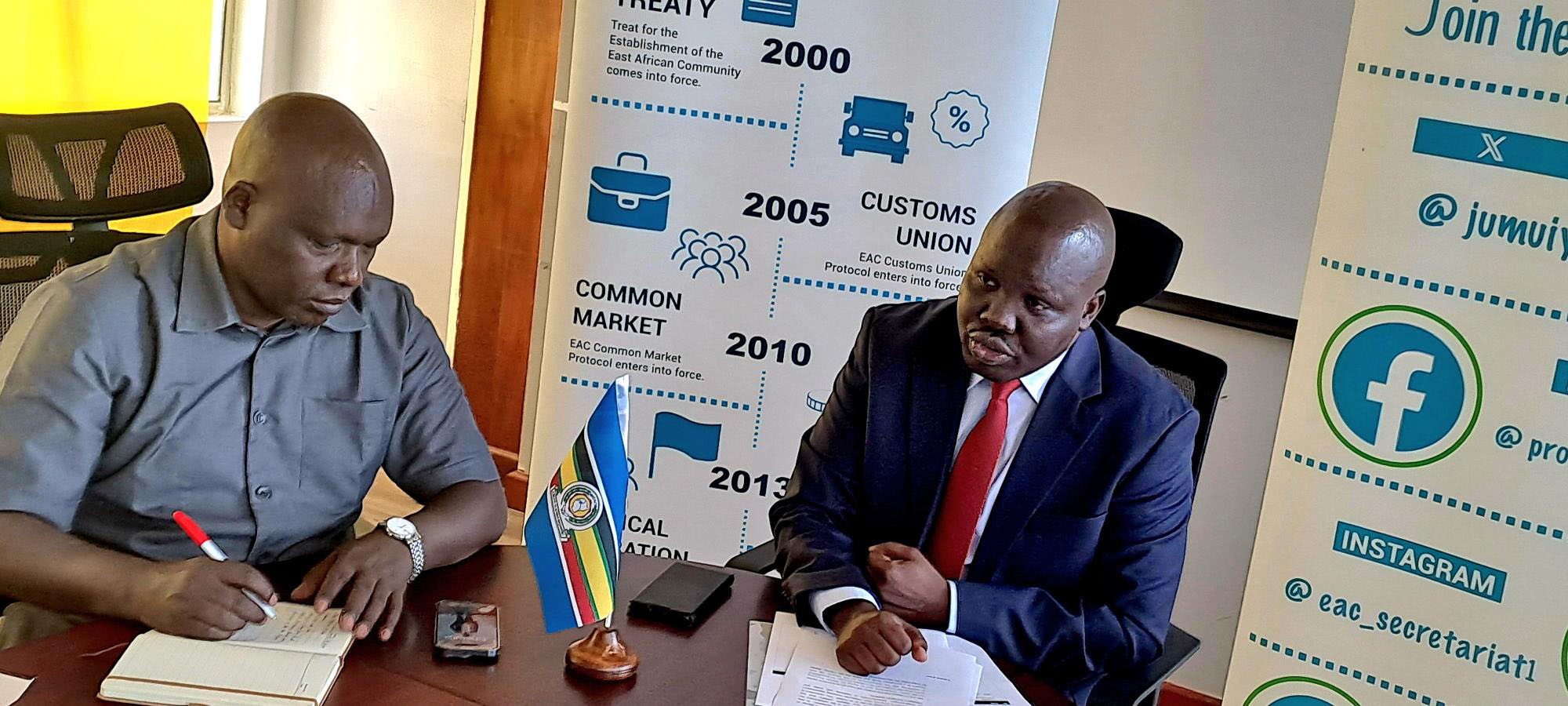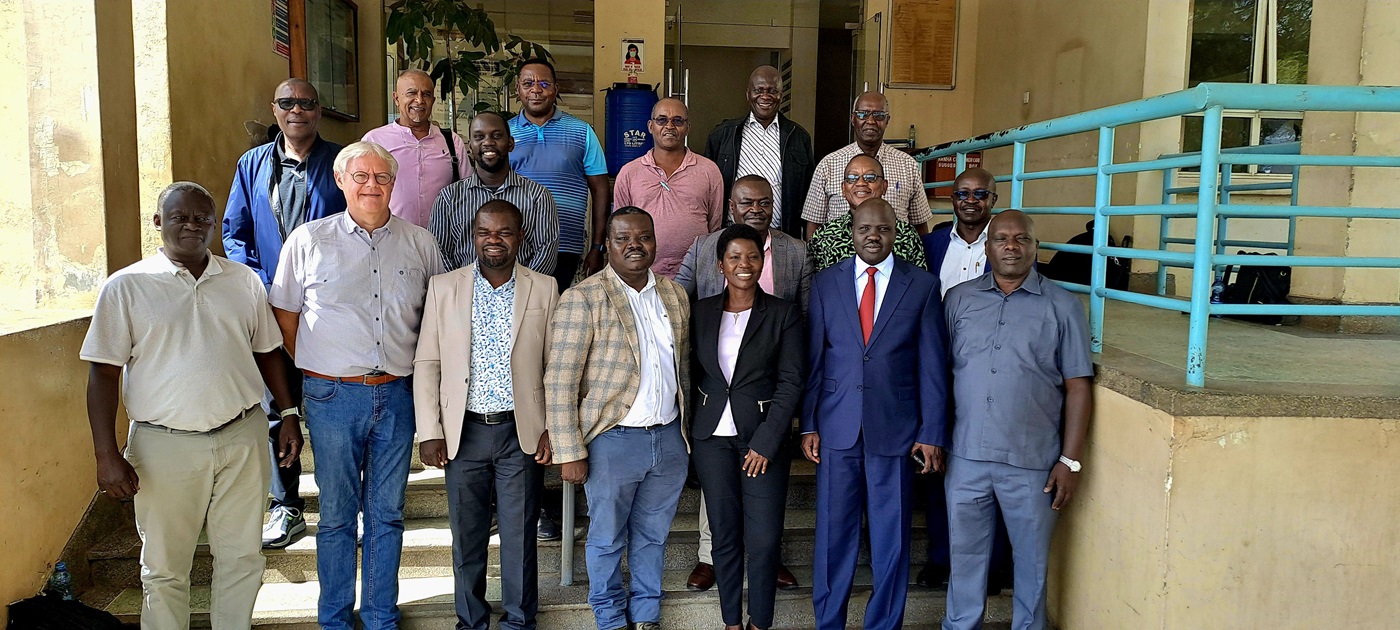Kisumu – Busia/Kakira – Malaba Expressway set to boost intra-regional trade in the Eastern Africa
East African Community Headquarters, Arusha, Tanzania, 24th April, 2024: The feasibility studies for the 256km multinational Kisumu-Kisian-Busia/Kakira-Malaba-Busitema-Busia expressway is set to start soon after EAC officially handed over the site to the consultancy firm named GOPA Infra Gmbh of Germany together with ITEC Limited of Kenya.
The expressway that will run from Kisumu in Kenya to Kakira, a town Jinja district, will involve rehabilitation of the existing two-lane single-carriageway to bitumen standards and the upgrading of the same into a two-lane dual carriageway over a 104km stretch.
The $1.4 million feasibility study project funded by the African Development Bank (AfDB) will determine the economic viability of upgrading the existing multinational road sections from single carriageway to expressway standards. The studies will be carried out as one integrated project but in two distinct packages to determine the economic feasibility of developing the corridors that connect the two countries to the port of Mombasa.
The expressway is part of improvements on the Northern Corridor which provides landlocked East African nations faster access to Mombasa Port. It also forms part of the Mombasa-Kigali expressway that was prioritised at the EAC Heads of States Retreat on Infrastructure Development held in February 2018 in Kampala.
The rehabilitation along the EAC Northern Corridor is expected to contribute to strengthening road infrastructure within the EAC region to fast-track regional integration and spur cross-border trade.

Speaking during the site handover ceremony in Kisumu, the EAC Deputy Secretary General in charge of Infrastructure, Productive, Social and Political Sectors, Hon. Aguer Ariik Malueth, disclosed the estimated overall duration of the feasibility study will be 18 months.The total cost is estimated at USD 1,499,587.00.
Hon. Ariik further revealed that the upgrading of the Kisumu-Kisian-Busia/Kakira-Malaba-Busitema-Busia expressway is expected to improve the transport services to five land-linked EAC Partner States, namely Uganda, Rwanda, Burundi, South Sudan and DRC.
“It is our expectation that Partner States are also in the process of upgrading the other sections of the Nothern Corridor from Mombasa through Nairobi up to Malaba and from Kampala westwards towards Katuna and Mpondwe so as to achieve a uniform high level of service along the entire corridor,” he said.
Hon. Ariik disclosed that EAC has 10 cross-border corridors that form the EAC Road Network Project totaling 15,000 kilometers, adding that the focus of the EAC Secretariat is to promote their improvements for the enhancement of the economic well-being of all EAC citizens.
The DSG also said that the scope of the assignment of the feasibility study will include the improvement of the Busia and Malaba One Stop Border Posts (OSBPs) and the upgrading of Lwakhakha Border between Kenya and Uganda to an OSBP.

“The consultant is also expected to propose other measures including digitalisation of weighbridges, establishment of roadside rest areas and intelligent transport system,” added Hon Ariik.
On his part, Eng. Godfrey A. Enzama, the Principal Civil Engineer at the EAC Secretariat said that the road project will not only be expected to improve the transport flow, but also will address the issue of poor road safety along the road.
Eng. Enzama added that the entire EAC region, and in particular some sections of the Northern Corridor, has very high incidences of fatal road crashes, brought about by a variety of reasons including driver behaviour, bad weather, poor road conditions and pedestrian-vehicle conflicts.
On his part, Eng. Luka Kameli, who represented the Principal Secretary at Kenya’s Ministry of EAC, ASALs and Regional Development, said that the rehabilitation of the Kisumu-Kisian-Busia/Kakira-Malaba-Busitema-Busia expressway will boost most economic sectors including imports, exports, mining, forestry, production and delivery of manufactured products, trade in livestock and fisheries, goods and industrial products and tourism.
Original article
Image source: eac.int

